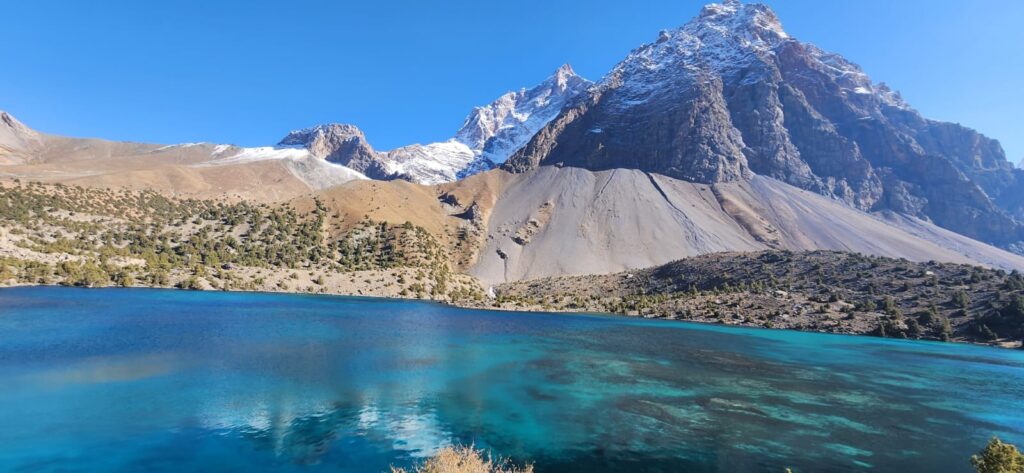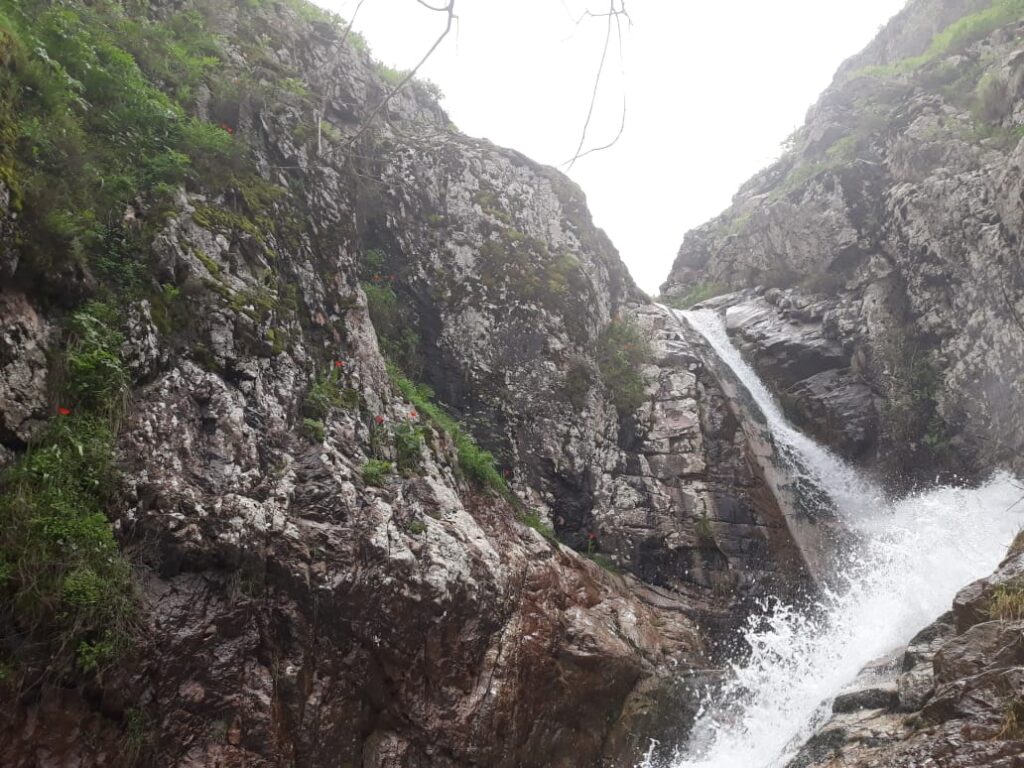On a spring afternoon in 2016, the mountains above Dushanbe were half-shrouded in a pale, yellow-gray haze. From the rooftops of the capital, one could look west toward the Kafirnigan River valley and watch the sky blur as fine dust drifted in from the deserts beyond. People in the city hardly gave it a second thought—dust storms were a familiar part of life in Central Asia. But for a small group of scientists gathered at the Institute of Physics and Technology of the Academy of Sciences of Tajikistan, the haze marked the beginning of something unprecedented: the first dedicated field campaign to study the vertical profile of aerosols in the country, a project called CADEX—the Central Asian Dust Experiment.
CADEX was not simply about dust. It was about visibility, climate, and health. It was about bringing a global research effort—normally concentrated in Europe or North America—into the high valleys of Tajikistan, a place more often thought of for its peaks and glaciers than for its air. At the heart of the project stood a towering instrument, the PollyXT lidar, newly installed in Dushanbe in 2015. For the first time, Tajik scientists, working with German colleagues, could “see” the invisible layers of dust, smoke, and pollution rising above the city, kilometer by kilometer into the atmosphere.
In the early weeks of the project, scientists logged the arrival of long-distance dust plumes sweeping in from the deserts of Turkmenistan and Uzbekistan. These were not the heavy, suffocating storms that blacken skies and choke roads, but finer, lofted particles that traveled high and far, sometimes circling the globe. “The potential impact of mineral dust is not restricted to the desert regions,” wrote atmospheric physicist Albert Ansmann and colleagues in a 2011 background study, “but extends to climate, biogeochemistry, and health at a global scale” (Ansmann et al., 2011). Tajikistan, they believed, was a missing piece in this worldwide puzzle.
Dust was nothing new here. Soviet geographers had long recorded its seasonal patterns. Farmers cursed it for settling on cotton leaves, reducing photosynthesis, or for filling irrigation ditches with sediment. City dwellers knew the way it clung to balconies, clothing lines, and windowsills. But measuring it—really understanding where it came from, how high it rose, how far it traveled—was another matter.
What CADEX offered was a chance to look upward, not just outward. Instead of treating dust as a nuisance to be swept away, it framed each storm as part of a transboundary story: grains of quartz and clay lifted from a distant basin, carried across mountains, and deposited on a glacier or in a child’s lungs. To measure dust vertically was to connect Tajikistan to the Sahara, the Gobi, and beyond, placing the Pamirs and the Fergana Valley squarely on the map of global climate science.
For local researchers, this was more than an exercise in data collection. It was also a statement of inclusion. Central Asia had often been peripheral in environmental research, overshadowed by studies in China, India, or the Middle East. Now, Dushanbe was one of only a handful of lidar stations across Asia capable of contributing real-time profiles to international networks. “In the context of the worldwide effort to understand aerosols,” wrote Amir Imashev, a physicist at the Academy of Sciences, “Tajikistan represents both a blind spot and a critical vantage point” (Imashev, 2015)
In practical terms, the work required patience. The lidar shot pulses of light into the sky, tracking how particles scattered the beam back toward earth. Computers translated those returns into color-coded charts showing dust layers stacked like blankets over the city. The scientists learned to recognize the signature of desert dust—broad, diffuse, high-rising—from the sharper spikes of local pollution, such as smoke from households burning coal or wood in winter.
For residents, the scientific campaign sometimes seemed distant. Dushanbe was in the midst of change: new apartment blocks climbing at the city edges, broad avenues planted with fresh trees, and an ever-present stream of labor migrants returning from Russia. Dust hardly ranked among the most pressing concerns. Yet there were moments when its impact was unavoidable. Teachers complained of students coughing during March and April, the windiest months. Pilots worried about visibility on approach to the airport. And doctors quietly wondered whether the rising rates of respiratory illness could really be separated from the steady pall of airborne particles.
Globally, studies had already linked desert dust to bronchitis, asthma, and even cardiovascular disease. In 2016, World Health Organization data suggested that air pollution contributed to thousands of premature deaths annually across Central Asia.
“Airborne dust can be a trigger for both acute and chronic health problems,” noted a WHO regional report (WHO, 2016). But in Tajikistan, hard evidence was sparse. CADEX offered the first step toward bridging that gap: a way to trace dust events not just on the ground, but through the air column above.
The timing of CADEX was symbolic. Only a year earlier, in 2015, the Paris Climate Agreement had placed renewed attention on emissions, aerosols, and the atmosphere. For Tajikistan—a small, mountainous republic with fragile glaciers and scarce energy resources—the link between dust, climate, and water was immediate. Dust deposition on snow and ice accelerates melting, darkening the surface and absorbing more sunlight. The Pamirs, sometimes called the “Roof of the World,” feed rivers that sustain millions downstream. A few weeks of early melt could spell shortages of irrigation water in the Vakhsh or Amu Darya valleys.
The international partners knew this. Germany’s Leibniz Institute for Tropospheric Research, or TROPOS, had long studied Saharan dust crossing into Europe. By bringing their lidar to Tajikistan, they hoped not only to improve global models but also to train local scientists to continue the work. “It is essential to build regional expertise,” Ansmann argued in a conference talk, “so that the data are not just collected, but interpreted and owned by the countries themselves” (Ansmann, 2015).
Looking back at that spring of 2016, what stands out is not only the novelty of the equipment but the sense of possibility it created. For the first time, Tajikistan’s hazy skies were not simply endured—they were interrogated, charted, and shared with the world. It was a modest start, a handful of researchers working in a modest laboratory, but one that carried echoes of something larger: a country with some of the highest mountains on Earth stepping into the role of a watcher of the skies.
As the months rolled on, CADEX logged storm after storm. Each line of data added texture to a picture of Central Asia not just as a land of passes and valleys, but as a crossroad of the atmosphere itself. For a city used to being dusted by winds, the realization was profound: Dushanbe was not only at the foot of mountains, but beneath the sweep of a planetary system.
References
- Ansmann, A., et al. (2011). “Central Asian Dust Experiment: Motivation and First Results.” Journal of Atmospheric Science.
- Ansmann, A. (2015). Presentation at TROPOS workshop on aerosol research. Leipzig: TROPOS Archives.
- Imashev, A. (2015). Perspectives on Aerosol Research in Tajikistan. Institute of Physics and Technology, Academy of Sciences of Tajikistan.
- World Health Organization (2016). Ambient Air Pollution: A Global Assessment of Exposure and Burden of Disease. Geneva: WHO Press.








